 By Independent News Roundup
By Independent News Roundup
A major new study published in the International Journal of Medical Sciences of 2.9 million adults — 1.45 million vaccinated vs. 1.45 million unvaccinated — has revealed alarming post-vaccination outcomes. This large-scale, real-world analysis drew from the health records of more than 100 million U.S. patients (TriNetX) to evaluate post-vaccine kidney and mortality outcomes over a full year of follow-up, adjusting for age, sex, race, comorbidities, and medication use through one-to-one propensity matching.
The findings are deeply concerning: acute kidney injury and dialysis rates were significantly higher in vaccinated individuals and continued to rise month after month with no indication of slowing. Dialysis — the mechanical filtering of blood used only when the kidneys can no longer function adequately — represents the most severe form of renal failure and underscores the gravity of the observed effect.
Most strikingly, Pfizer (BioNTech) recipients showed an elevated risk of death compared to unvaccinated controls — even after all early post-vaccination deaths were excluded from analysis.
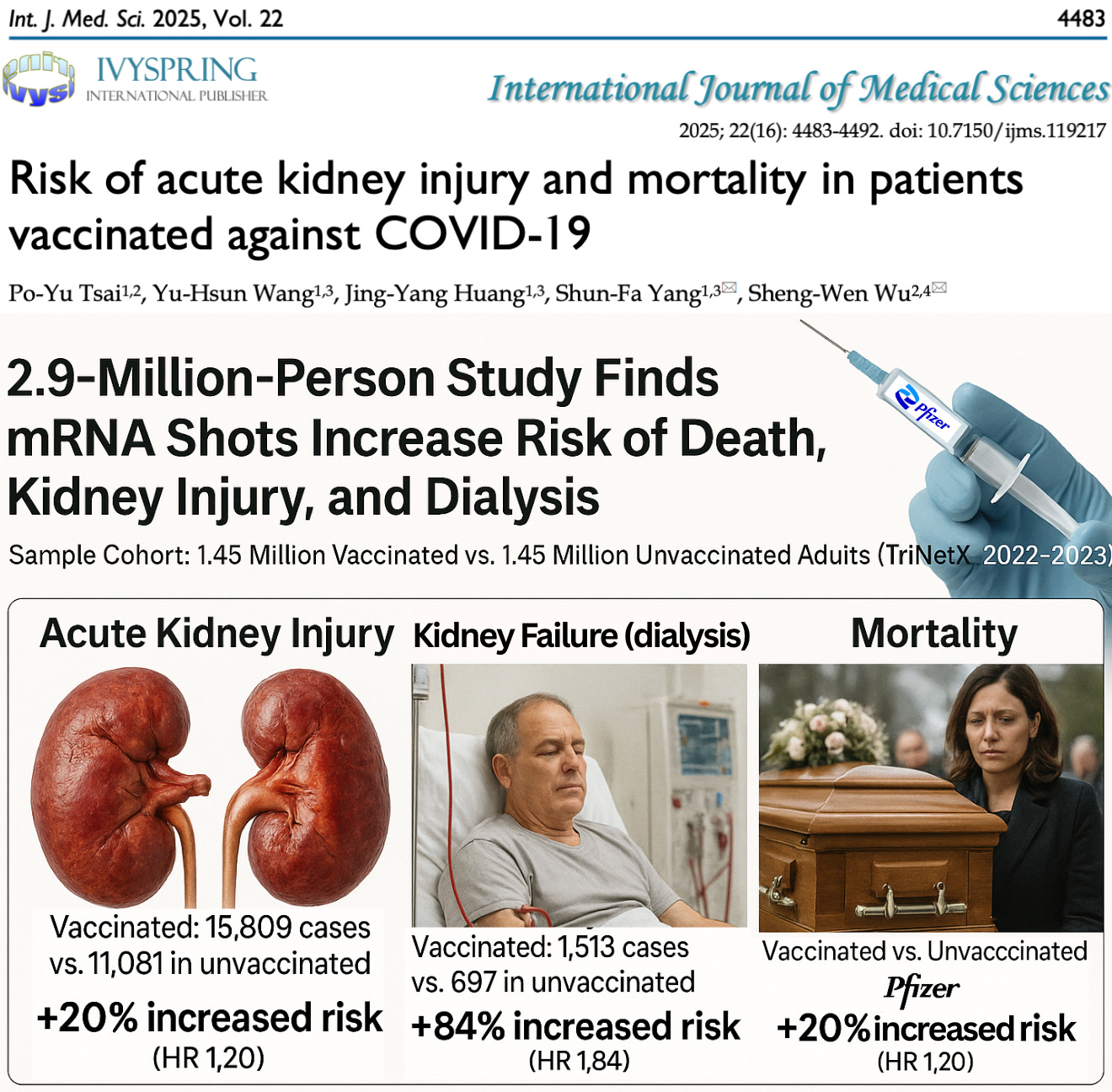
Vaccinated: 15,809 cases vs. 11,081 in unvaccinated — +20% higher risk (HR 1.20; 95% CI 1.18–1.23).
The excess risk increased steadily as time progressed. From 6 to 12 months post-vaccination, AKI incidence continued to climb without plateau, suggesting an ongoing renal or vascular injury process rather than a transient effect.
Vaccinated: 1,513 cases vs. 697 in unvaccinated — +84% higher risk (HR 1.84; 95% CI 1.68–2.01).
Dialysis represents end-stage kidney failure, when the kidneys can no longer filter blood adequately and mechanical life support becomes necessary. Both mRNA platforms demonstrated clear harm, with new dialysis (kidney failure) cases accumulating progressively over time rather than stabilizing, indicating a persistent and worsening injury process.

Within the same matched population, BioNTech recipients had a +20% higher risk of all-cause death compared with unvaccinated controls (HR 1.20; 95% CI 1.13–1.27).
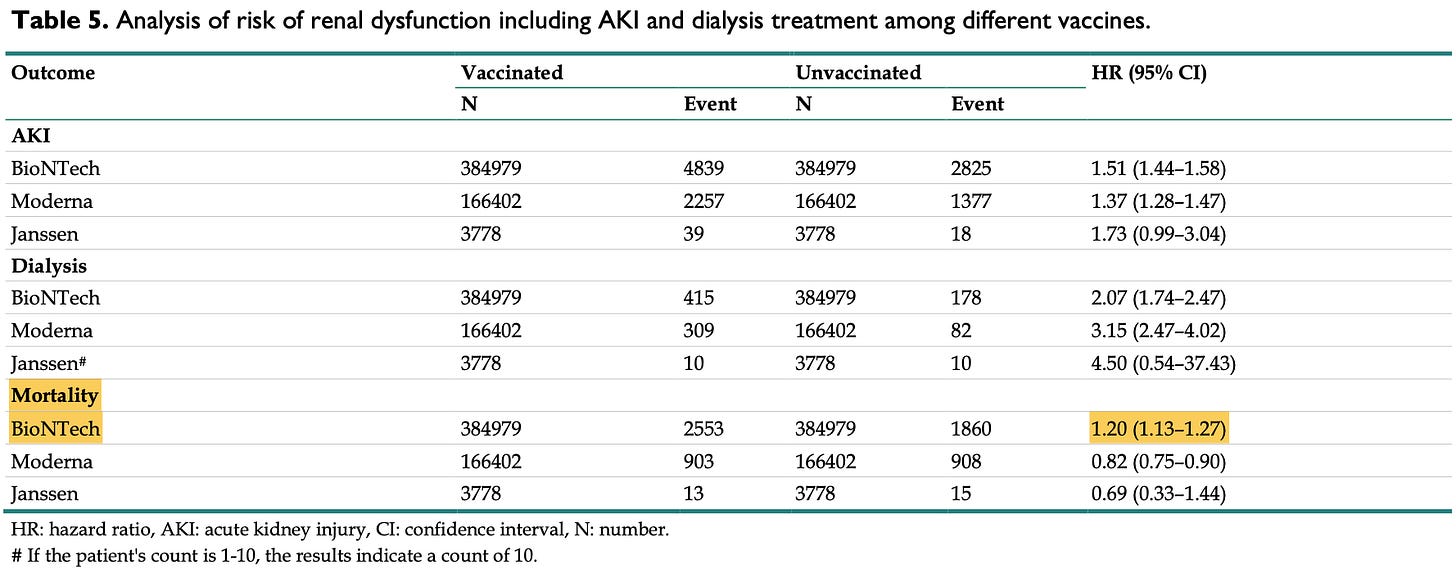
Moderna showed a lower risk (HR 0.82; 95% CI 0.75–0.90), producing a misleading overall “protective” average (HR 0.88) that conceals the Pfizer-specific mortality increase.
Here’s why these mortality numbers are likely far higher in reality:
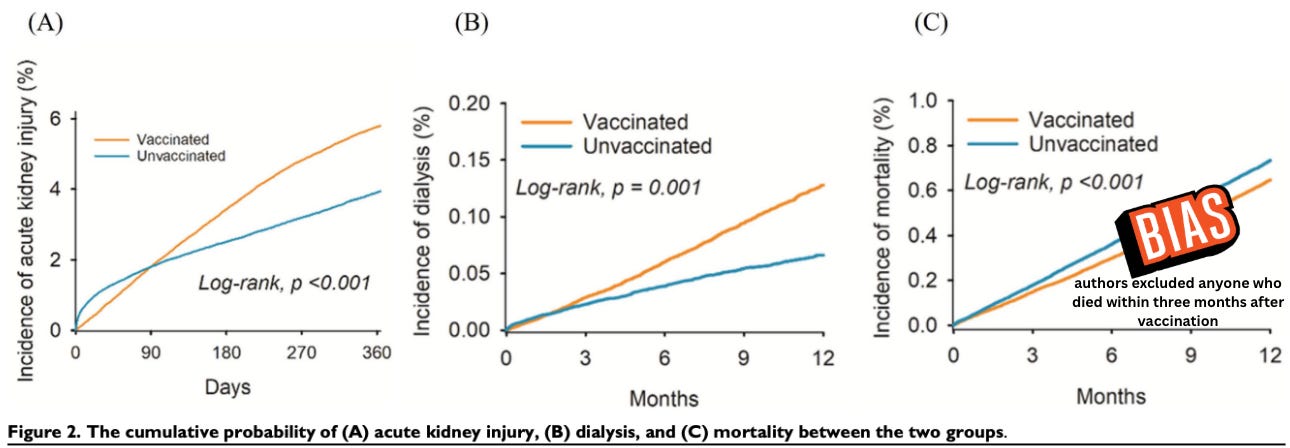
The authors excluded anyone who died within three months after vaccination to “standardize baseline health.” This maneuver erases the exact period when many fatal serious adverse events occur — myocarditis, embolism, cardiac arrest, or early multi-organ failure.
Thus, early vaccine deaths vanish from the data, leaving only survivors. The model then produces an illusory mortality reduction (HR 0.88).
Yet even under this protective bias, Pfizer’s vaccine still increased all-cause mortality by 20%, implying that the true risk would be substantially higher if early deaths were included.
This study corroborates findings by John Beaudoin, Sr., who previously reported 211,805 excess U.S. deaths due to acute kidney injury (AKI) from 2021 to 2024, likely due to COVID-19 “vaccination” and disastrous COVID-19 treatment protocols:

This study also is in line with recent paper by Hwang et al who found, among 120.7 million adverse event reports, increased risks of Acute Kidney Injury (2.4X), Glomerulonephritis (13.4X), and Tubulointerstitial Nephritis (2.4X) following mRNA injection:
Nicolas Hulscher, MPH·18 Feb
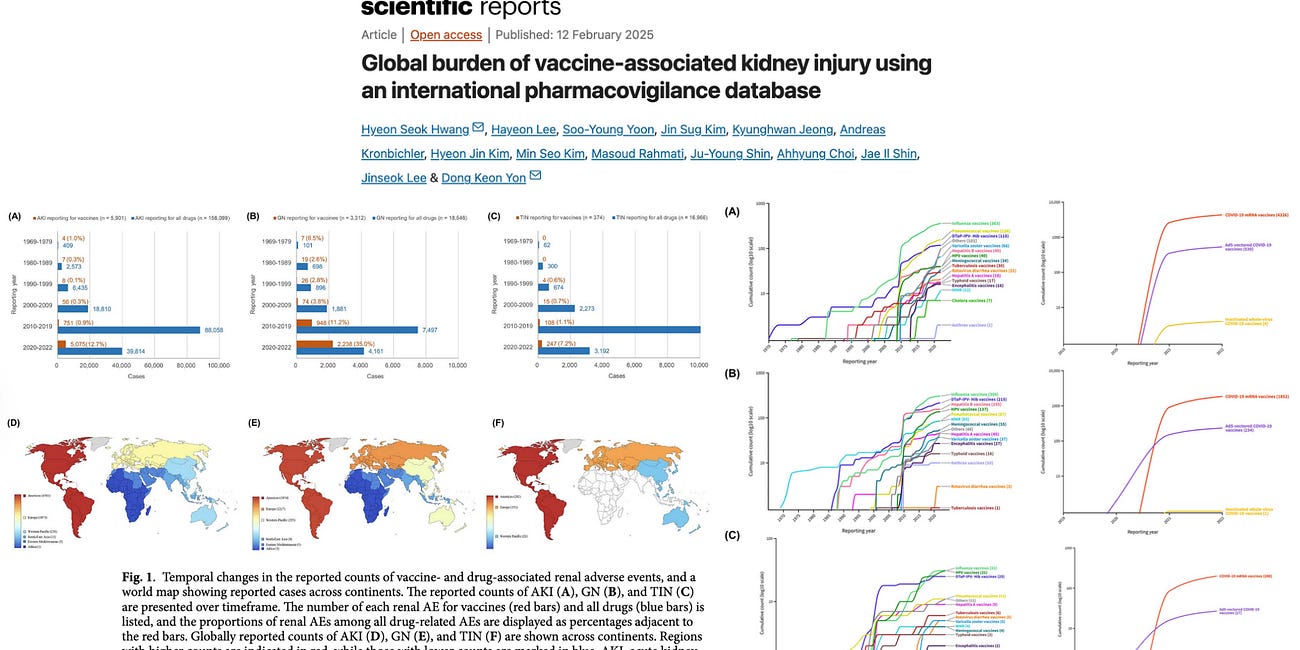
by Nicolas Hulscher, MPH
Together, these findings indicate a pattern of progressive microvascular injury extending beyond cardiac and neurological tissue to the kidneys.
Higher mortality risks among Pfizer recipients compared to Moderna recipients was also detected in a recent study of 1.47 million Florida adults by Dr. Retsef Levi and Florida Surgeon General Dr. Joe Ladapo:

Nicolas Hulscher, MPH·30 AprRead full story
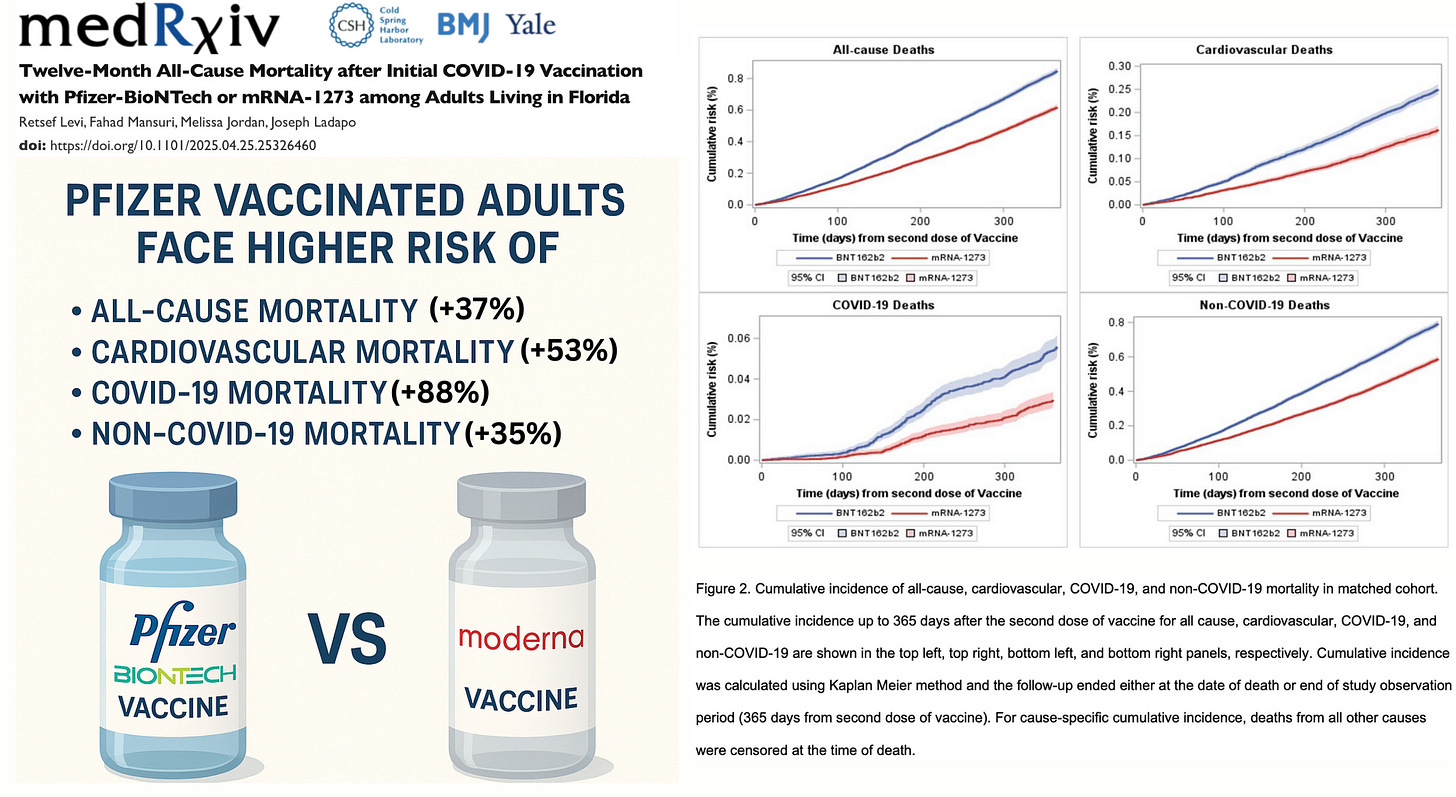
This enormous matched-cohort analysis — spanning nearly three million adults — found that COVID-19 vaccination is associated with worsening kidney outcomes that intensify over time and that Pfizer’s mRNA shot correlates with higher all-cause mortality even after early post-vaccine deaths were excluded.
The study’s 3-month exclusion window conceals immediate fatalities, meaning the true mortality burden is almost certainly greater than reported.
The upward trajectory of serious kidney injury and dialysis risk shows no sign of stabilizing, raising serious concerns about the long-term impacts of mRNA injection programs.
As more disturbing data emerge week after week, the scientific record is becoming impossible to bury—and the future legal reckoning for those who kept these mRNA products on the market despite clear warning signs grows ever more severe.
Epidemiologist and Foundation Administrator, McCullough Foundation
Support our mission: mcculloughfnd.org
